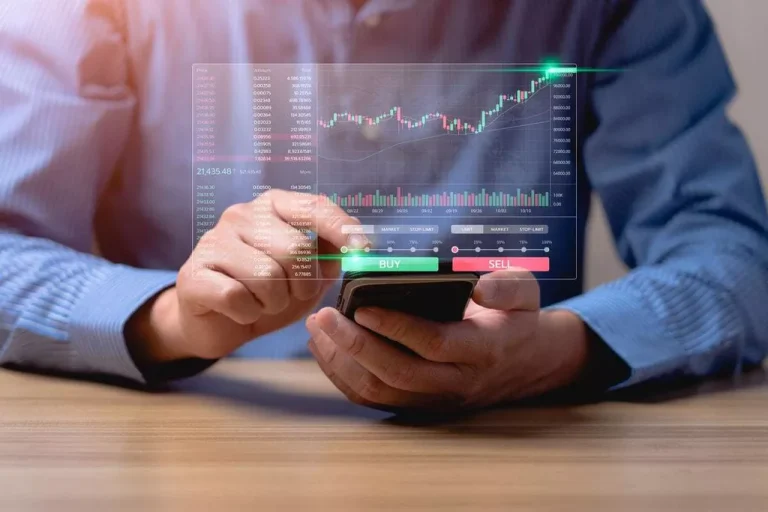Content
Bid-ask spreads are a key measure of the liquidity of an asset or security. Each of these capital markets players contributes to ETFs trading more efficiently throughout the day, which benefits both https://www.xcritical.com/ buyers and sellers. There are also economic benefits for the capital markets participants. Brokers and dealers execute trades on behalf of clients by routing orders to trading venues or by matching buyers and sellers directly.
Don’t use trading volumes or fund size as a guide.
ETFs are subject to market fluctuation and the risks of their underlying investments. Unlike mutual funds, ETF shares are bought and sold at market price, which may be higher or lower than their NAV, and are not individually redeemed from the fund. When new funds come into/out of a mutual fund, the portfolio manager is alerted and then places trades in the fund to invest those new assets, or sell securities to raise cash to satisfy the outflow. The portfolio manager provides the market makers with the make-up of AML Risk Assessments a basket of securities (i.e. the number of shares of each security held in each basket of the ETF).
All You Need To Know Before Investing In Gold ETFs
When one aggregates these different components, investors are more likely to place ETF trades in excess of what is observable when just looking at ADVs. As an example, in Emerging Market Debt some ETFs seem as though they trade around $25mn when one aggregates the trading lines. However, trade sizes placed intraday, around $300mn can unlock superior liquidity with etfs also be executed at similar bid offer spreads.
CPI Moves Higher Amidst Mixed Currents: What Should Investors Do Now?
Their jobs are to support advisors in fulfilling their clients’ needs. The rise of ETFs over the past 15 years has led to questions about how easy they might be to buy and sell, especially if trading volume is low or during a market downturn. All persons and entities accessing the Site do so on their own initiative and are responsible for compliance with applicable local laws and regulations.
What next for the global economy and markets in 2025?
An AP buys the ETF shares from the market and returns them to the ETF issuer. The AP receives a basket of the underlying clean tech stocks in exchange. This process helps to absorb the excess supply of ETF shares in the market, supporting the ETF’s price and preventing it from plummeting.
Repo refers to repurchase agreements in the form of short-term borrowing for dealers in government securities. The dealer sells the government securities to investors, usually on an overnight basis, and buys them back the following day. Well, CBLO is a money market instrument that enables entities to borrow and lend against sovereign collateral security. The maturity ranges from 1 day to 90 days and can also be made available upto 1 year.
The creation and redemption process is a unique differentiator compared to individual stocks, and helps explain why ETF assets or trading volume do not necessarily determine ETF liquidity. As exchange-traded funds (ETFs) and stocks both trade on an exchange, investors may assume that, like stocks, ETF liquidity is determined by the volume of trading or outstanding units. This leads to the common misconception that ETFs with lower average daily trading volumes are less liquid or, in other words, more difficult to trade and have wider spreads. Throughout the trading day, if there are substantially more investors buying than selling an ETF’s shares, new shares may need to be created by certain large institutional trading desks known as authorized participants.
Liquidity of an ETF is tied to the liquidity of the underlying securities held in the ETF, not how many shares of the ETF itself trades. Unlike buying an individual stock where daily trading volume is important, an ETF represents an investment in a group of underlying securities, and it is the liquidity of these underlying securities that is important for investors to consider. An ETF is open ended, meaning that when assets come in (or out), shares are added (or sold) to satisfy the inflow/outflow in assets.
- In this blog post, we explain why low volume should not deter investors from investing in a new ETF.
- However, when you look at its implied liquidity, it suggests that IJR comfortably can trade closer to 6 million shares.
- In exchange for ETF shares, the short seller provides collateral, typically required to be higher in value than the borrowed shares.
- The size of an ETF measured by its assets under management (AUM) likewise doesn’t necessarily dictate its liquidity.
- Once there is enough demand in the ETF, these dealers would approach an ETF issuer to create a new unit (creation unit, typically 50,000 shares) of the ETF.
- In fact, they’re the reason ETFs are generally more tax-efficient than their mutual fund counterparts.
This strategy works well if the market declines or is choppy, but it does have an opportunity cost if the market rises when only part of your money has been invested. And even small commissions can add up over multiple buy orders unless your brokerage does not charge commissions. One of the biggest advantages of ETFs is that they trade like stocks. An ETF invests in a portfolio of separate companies, typically linked by a common sector or theme.
Typically, liquidity is higher during the market’s opening and closing, known as the market’s “rush hours,” because of higher trading volumes. During off-peak hours, for example, around lunchtime, liquidity may diminish, potentially leading to wider bid-ask spreads and less favorable prices for investors. ETFs trade on a stock exchange so liquidity is available while the market is open, and sometimes pre-market open.

Tighter spreads equal greater liquidity, and that corresponds with less risk in entering and exiting your trades. Depending on how often you trade an ETF, trading fees can quickly add up and reduce your investment’s performance. Prices of mid- and small-cap stocks often fluctuate more than those of large-company stocks. Funds that concentrate on a relatively narrow market sector face the risk of higher share-price volatility.

This is measured by implied liquidity and it plays a vital role in judging the overall tradability of an ETF. By understanding and effectively gauging implied liquidity, investors can make more informed decisions regarding their trade execution and risk management. This unique creation and redemption mechanism means that ETF liquidity is much deeper and much more dynamic than stock liquidity. It also explains why an ETF‘s liquidity is predominantly determined by the liquidity of its underlying individual securities, rather than by the size of its assets or by trading volumes.
The management fees for most ETFs tend to be much lower than mutual funds, which means more money can be put towards a potential return. As an example, iShares Core ETFs average about one-tenth the net expense ratio of most mutual funds.1 The impact of these cost savings can be meaningful, particularly over time or when market returns are low. When the demand for ETF shares outweighs the supply in the secondary market, APs can ‘choose’ to create shares directly from the ETF issuer. As supply outweighs demand in the secondary market, APs can ‘choose’ to redeem ETF shares to the ETF issuer. Ultimately, as long as the AP can effectively and efficiently trade the underlying basket of securities, these demand and supply imbalances can be adjusted continuously. Investors can buy or sell ETF shares in the secondary market either on-exchange or over the counter (OTC).
ETFs have reshaped investing for the better, expanding investors’ access to diverse and previously unavailable strategies, lowering investment costs, and promoting tax efficiency. Arguably, one of the paramount benefits is the liquidity and tradability that ETFs provide, offering investors an efficient trading vehicle for targeted market exposure. Most ETF orders are entered electronically and executed in the secondary market where the bid/ask prices that market participants are willing to buy or sell ETF shares at are posted. Secondary market liquidity is determined primarily by the volume of ETF shares traded. Suppose the market cools down, and investors decide to sell their shares of GreenTech ETF. The increased selling pressure could drive the price of the ETF shares well below the NAV.
Additionally, market makers will publish quotes beyond the visible liquidity for most ETFs. Market makers do this so that larger-size trades can be executed while covering their costs of providing liquidity. The creation and redemption process helps ensure that an ETF’s share price aligns with the value of the underlying securities. These transactions may impact the liquidity of underlying security markets.